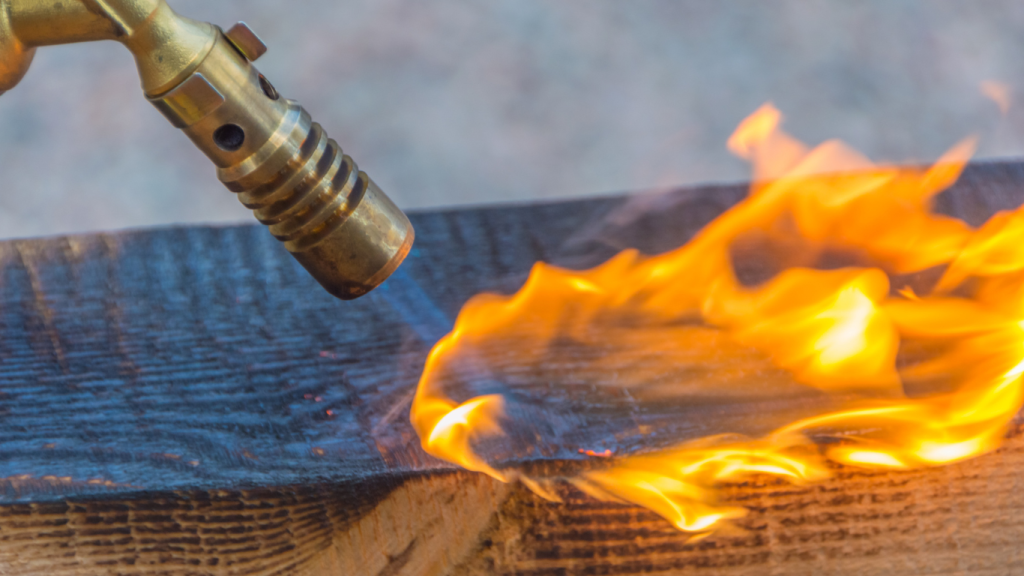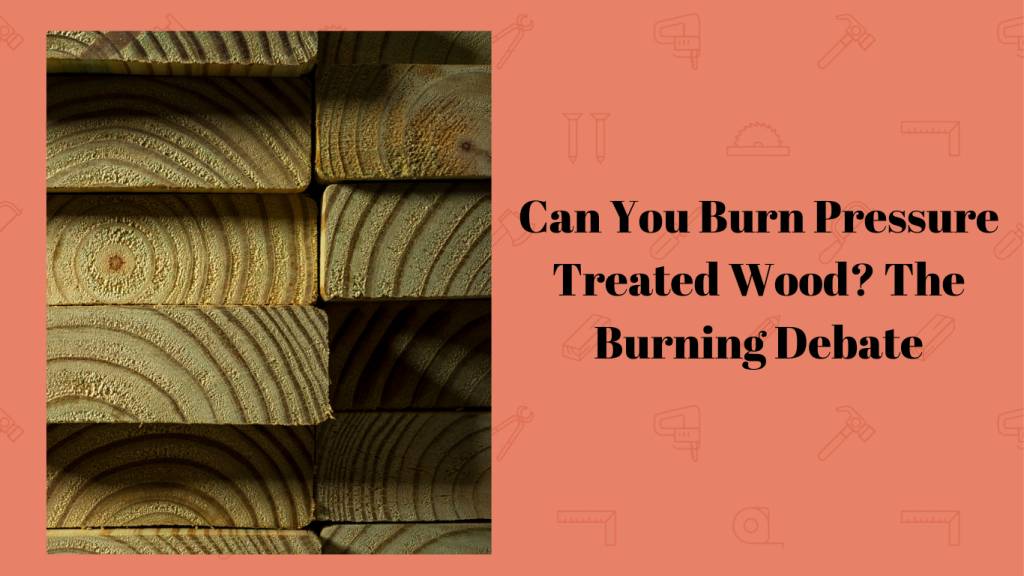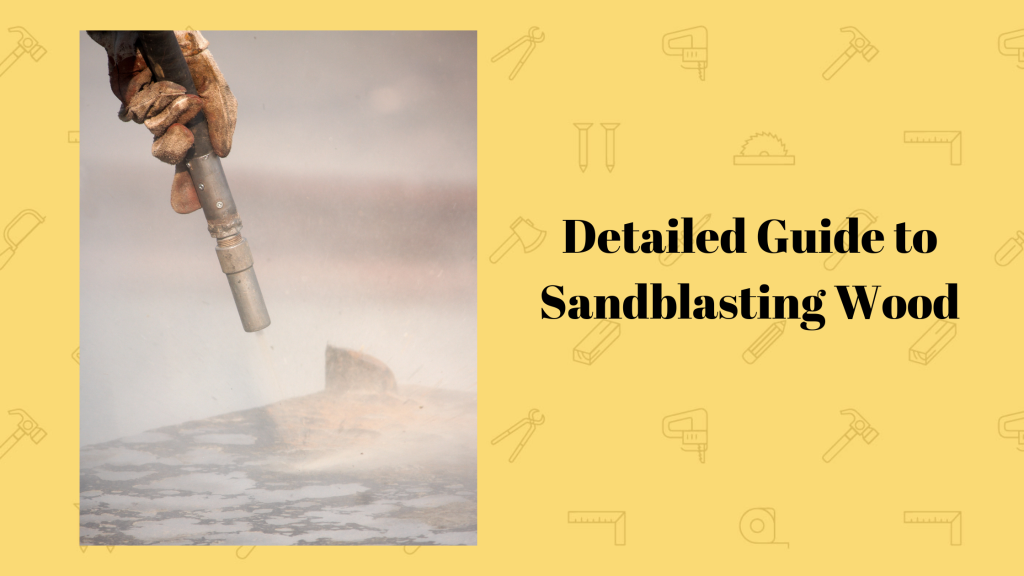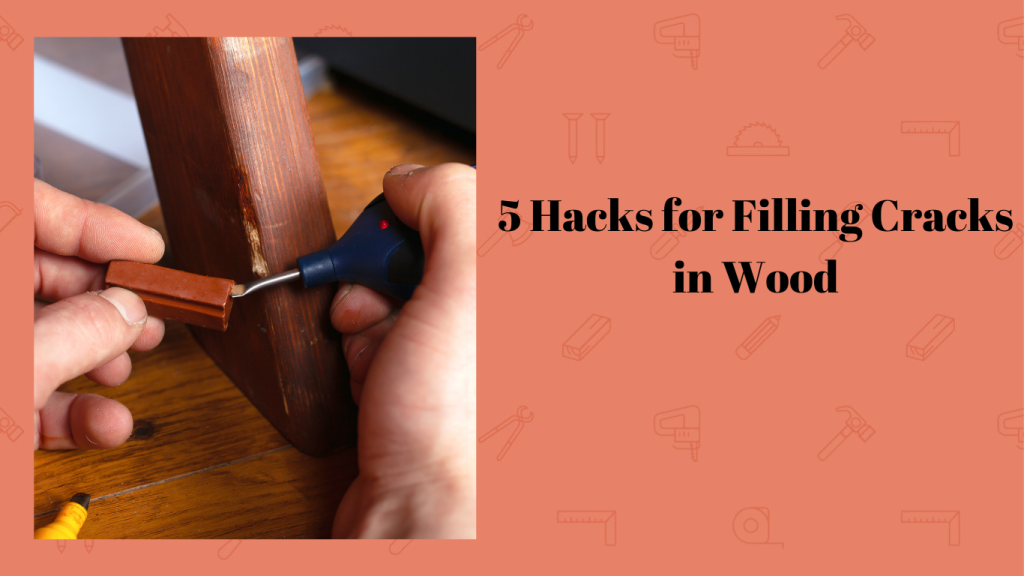Getting rid of excess timber during a woodworking project, you’ve probably asked yourself: Can you burn pressure treated wood?
It’s a more-than-fair question! Let me explain the safety and environmental effects you can see when you burn pressure-treated wood, show the differences in this type of lumber compared to other products like manufactured wood, and explain some of the main types of pressure-treated wood.
Let’s jump in!
Can You Burn Treated Lumber?
Let me tackle the most important question right off the bat: Can you burn treated lumber?
This is where it gets kind of dicy. The simple answer is that you can burn pressure-treated wood. It’s just another type of wood, so it’ll burn like all wood does. But, if we want to complicate the answer a bit, you typically shouldn’t burn treated lumber. There’s too many safety hazards and negative environmental effects to deal with.
Why is it almost always a bad idea to burn treated lumber? I’ll explain more closely in these next few sections.
Why You Shouldn’t Burn Treated Lumber
What even happens when someone burns pressure-treated wood?
The visible effect is that the wood burns and collapses into a big smoky mess (cool, right?), but that doesn’t quite do justice to what’s happening “under the hood” when you burn this kind of lumber.
Pressure-treated wood gets made with a bunch of preservative chemicals, like arsenic, copper, and chromium. When you set treated lumber on fire, these preservatives get released into the air in a big, unbelievably toxic combination.
But, if we want to make things even more worrying, the effects go way beyond just the smoke that gets released by burning pressure-treated wood.
To give you just one example, copper is a heavy metal, right? So, it usually builds up in the leftover ash and, despite not having an invitation, sticks around in the soil for a long time afterward.
Is It Safe to Burn Pressure-Treated Wood?
The short answer: No, I can’t emphasize enough, it is not safe to burn pressure-treated wood.
Not only are all the preservatives and different chemicals released when you burn treated wood dangerous to inhale, but they also contaminate the soil and threaten both the environment and your long-term health.
If you inhale arsenic, copper, or zinc (and this will almost definitely happen if you burn treated lumber), it can cause dangerous health effects. Especially if you breathe in a huge quantity of the fumes, which is sometimes unavoidable if you’re burning a big pile of wood.
What are the health complications? To start, an increased risk of respiratory conditions.
These chemicals are also carcinogenic, so a higher risk of cancer is also a consequence of prolonged exposure.

What Happens if You Accidentally Burn Pressure-Treated Wood
As I hope I’ve clarified by now, the question is not so much “Can you burn pressure-treated wood?” as it is “Should you?”
And the answer is a resounding no.
But mistakes can happen. What do you do if you accidentally burn treated lumber? Are there any steps you can take to mitigate potential damages?
Firstly: Don’t panic!
While it’s a bad idea to burn pressure-treated wood, accidentally burning a small quantity one time is not likely to cause serious concerns. That said, there are a few things you can do to minimize safety risks:
- Ventilate the area to prevent smoke inhalation
- Extinguish the fire if it’s still going
- Tell family, neighbors, and passersby to avoid the area temporarily
What is Pressure-Treated Wood?
We’ve discussed the effects and the many risks of burning treated wood. But even is pressure-treated wood, and why on Earth would someone use it over regular (nontoxic!) lumber?
Even though it almost always looks and feels just like the standard timber you know and love, treated lumber comes about from a different manufacturing process.
Before it even sees the market, pressure-treated wood gets exposed to preservative chemicals. These chemicals do two main things, and they do them well: Add preservatives to the wood and remove air from the timber.
Make no mistake: Even factoring in all the risks that come from burning it, there are a whole bunch of reasons you might want to use pressure-treated wood.
Firstly, let me talk about pests for a second. Manufacturers add preservatives to the treated wood that make it much more resistant to termites and other pests. To throw in some bonus selling points, chemical preservatives also repel wood-eating fungi and stave off decay.
All of this adds up to the main advantage, and the reason so many people use it: Treated lumber tends to last way longer than regular wood. Its longer lifespan can’t be beat for large building projects, especially done by professional construction teams.
Do you use pressure-treated wood a lot in your building projects? It’s probably worth investing in a wood preservative like the Rust-Oleum formula.

How Do You Tell if Wood is Pressure-Treated?
Is there an easy way to tell apart treated wood from ordinary lumber? I mean, it’s probably a whole lot easier to keep from burning treated wood if you know what it looks like in the first place!
Unfortunately, most of the time pressure-treated wood looks basically the exact same as any other piece of standard lumber.
But, on a brighter note, some types of treated lumber have visual markings you can use that let you know you aren’t dealing with normal wood. See if you can spot a definite greenish color throughout the lumber. That’s a surefire sign you’re dealing with pressure-treated wood.
On the other hand,if you want to be safe, there’s really only one direction to go: Only burn wood that you 100% know hasn’t been pressure-treated.
Types of Pressure-Treated Wood
Since all pressure-treated wood uses chemical preservation, does that mean it’s all the same? Not exactly. There are two main types of treated wood, even though they both use a similar process.
So, what are the two categories? Above-ground wood and ground-contact wood.
Now, both of these categories have definite benefits and drawbacks, so which one you should use depends greatly on what you’re using the wood for.
Let me go through a more detailed rundown of each one!
Above-Ground Wood
You might have guessed from the name: Above-ground treated lumber works best…above ground. Especially to projects six inches (or, ideally, higher) from the ground.
The main reason someone might choose above-ground wood is that you can easily maintain or even completely replace it as your woodworking project gets more complex.
You might also wonder: Can you burn pressure-treated wood if it’s the above-ground type?
Unfortunately, no. Above-ground wood still poses all the scary health and environmental risks I talked about earlier, so it’s a very bad idea to burn it.
Ground-Contact Wood
How is ground-contact wood different, exactly? Well, it’s mainly designed for projects that make contact directly with the ground, though it can also work for structures six inches (preferably less) from the ground.
You know how pressure-treated wood protects from pests and decay? This is even more the case with ground-contact wood. On the other hand, as with most product benefits, there’s a drawback: Ground-contact lumber usually costs substantially more than above-ground wood.
Curious about a practical application for ground-contact wood? Check out this heavy-duty garden bench to see an example!
Like above-ground wood and other types of treated lumber, ground-contact wood is not safe to burn either.
Conclusion
While you can technically burn pressure-treated wood, doing so opens the door to severe health hazards and long-term adverse environmental effects.
For those reasons, it’s a terrible idea to burn it.
Or, let’s put it simply. Can you burn pressure-treated wood; yes, but please don’t!
*This post may contain affiliate links. Please see my disclosure to learn more.



